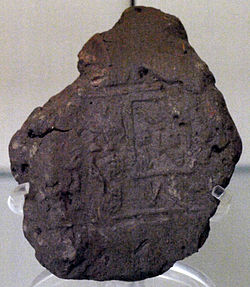| Anedjib | ||||||||||||||||||||||||||||||||||||||||||||||||||||||||||||||
|---|---|---|---|---|---|---|---|---|---|---|---|---|---|---|---|---|---|---|---|---|---|---|---|---|---|---|---|---|---|---|---|---|---|---|---|---|---|---|---|---|---|---|---|---|---|---|---|---|---|---|---|---|---|---|---|---|---|---|---|---|---|---|
| Anezib, Adjib, Azib, Miebîdós | ||||||||||||||||||||||||||||||||||||||||||||||||||||||||||||||
 Pharaoh Anedjib on a stone bowl fragment | ||||||||||||||||||||||||||||||||||||||||||||||||||||||||||||||
| Pharaoh | ||||||||||||||||||||||||||||||||||||||||||||||||||||||||||||||
| Reign | 8-10 years, ca. 2930 BC | |||||||||||||||||||||||||||||||||||||||||||||||||||||||||||||
| Predecessor | Den | |||||||||||||||||||||||||||||||||||||||||||||||||||||||||||||
| Successor | Semerkhet | |||||||||||||||||||||||||||||||||||||||||||||||||||||||||||||
| ||||||||||||||||||||||||||||||||||||||||||||||||||||||||||||||
| Consort | Betrest ? | |||||||||||||||||||||||||||||||||||||||||||||||||||||||||||||
| Children | Semerkhet? | |||||||||||||||||||||||||||||||||||||||||||||||||||||||||||||
| Father | Den ? | |||||||||||||||||||||||||||||||||||||||||||||||||||||||||||||
| Mother | Seshemetka ? | |||||||||||||||||||||||||||||||||||||||||||||||||||||||||||||
| Burial | Tomb X, Umm el-Qa'ab | |||||||||||||||||||||||||||||||||||||||||||||||||||||||||||||
| Dynasty | 1st Dynasty | |||||||||||||||||||||||||||||||||||||||||||||||||||||||||||||
Anedjib, more correctly Adjib and also known as Hor-Anedjib, Hor-Adjib, Anezib and Azib, is the Horus name of an early Egyptian king who ruled during the 1st Dynasty.
Contents
The Egyptian historian Manetho named him "Miebîdós" and credited him with a reign of 26 years, [1] whilst the Royal Canon of Turin credited him with an implausible reign of 74 years. [2] Egyptologists and historians now consider both records to be exaggerations and generally credit Adjib with a reign of 8–10 years. [3]







